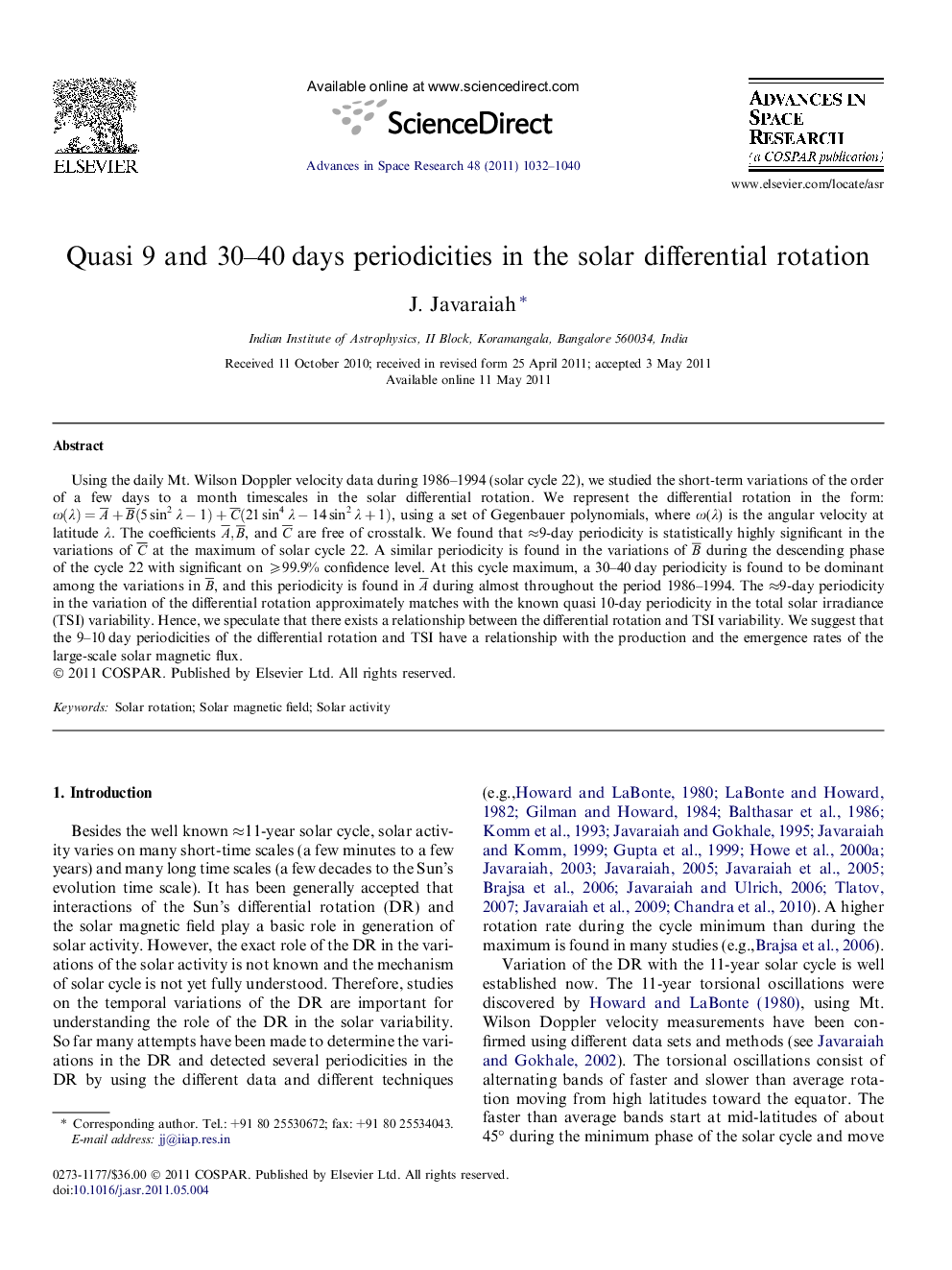| Article ID | Journal | Published Year | Pages | File Type |
|---|---|---|---|---|
| 1765124 | Advances in Space Research | 2011 | 9 Pages |
Abstract
Using the daily Mt. Wilson Doppler velocity data during 1986-1994 (solar cycle 22), we studied the short-term variations of the order of a few days to a month timescales in the solar differential rotation. We represent the differential rotation in the form: Ï(λ)=A¯+B¯(5sin2λ-1)+C¯(21sin4λ-14sin2λ+1), using a set of Gegenbauer polynomials, where Ï(λ) is the angular velocity at latitude λ. The coefficients A¯,B¯, and C¯ are free of crosstalk. We found that â9-day periodicity is statistically highly significant in the variations of C¯ at the maximum of solar cycle 22. A similar periodicity is found in the variations of B¯ during the descending phase of the cycle 22 with significant on ⩾99.9% confidence level. At this cycle maximum, a 30-40 day periodicity is found to be dominant among the variations in B¯, and this periodicity is found in A¯ during almost throughout the period 1986-1994. The â9-day periodicity in the variation of the differential rotation approximately matches with the known quasi 10-day periodicity in the total solar irradiance (TSI) variability. Hence, we speculate that there exists a relationship between the differential rotation and TSI variability. We suggest that the 9-10 day periodicities of the differential rotation and TSI have a relationship with the production and the emergence rates of the large-scale solar magnetic flux.
Related Topics
Physical Sciences and Engineering
Earth and Planetary Sciences
Space and Planetary Science
Authors
J. Javaraiah,
